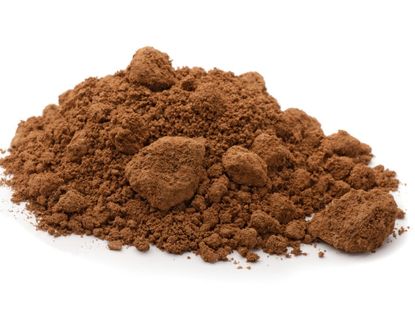How To Easily & Organically Improve Your Clay Soil


There are some patches of earth that seem to have been made for gardens. The soil is loamy, rich, and dark and crumbles just right in the hands. This is the type of garden that gardeners with clay soil are insanely jealous of. If you live in an area that is plagued by clay soil, you know how that feels. You sigh when having to put a shovel to the ground because you know that if only your soil was better, that the task of digging would not be nearly so hard. Yet, it is possible to organically improve your clay soil. Keep reading to learn more.
Clay Heavy Soil
How can you tell if your garden has clay heavy soil? One of the biggest indicators is if you take a handful of damp soil and squish it in your hands for a second, when you open your hands and that soil ball you just formed does not crumble, you most likely have clay heavy soil. Some other indicators are a greasy or slimy feel when the soil is wet, a dusty but hard appearance when the soil is dry, or if you have drainage issues. All of these things are signs that your soil has too much clay. Clay heavy soils can create several problems for a gardener. Clay soils have drainage problems that can literally drown your plants during times of heavy rains, and then when the weather is dry, the soil has a hard time retaining moisture and your plants will shrivel up. Having clay heavy soil is not a reason to give up on your garden though. With a little bit of work and a whole lot of compost, your garden soil can be the source of jealousy for your fellow gardeners as well.
How to Organically Improve Your Clay Soil
One of the best things you can add to your clay soil is a compost of some kind. Whether the compost is well-rotted manure, leaf humus, or many of the other options out there, you simply can not add too much to your clay soil.
- Place the compost on the flower bed that you want to improve the soil of and dig it in with either a shovel or a tiller. Make sure you work in some of the existing soil into the compost, as it will help any flowers you plant acclimate to the surrounding soil both on the side and below the bed.
- If you have more time (and you want to do less work), you can simply lay the compost on top of the soil and let it sit for a season or two. This works best if you place the compost on the clay soil early in fall and let it sit through to spring. The compost will work its way into the top few inches (8 cm.) of the clay and will give your bed a good start.
Gypsum is another thing you can add to clay soil to help improve it. The gypsum helps to push the clay soil particles apart, making room for proper drainage and water retention. Both compost and gypsum will also help attract worms to your clay soil, which then helps even further as the worms will burrow through the clay soil. The burrowing action of the worms will aerate your clay soil. As the worms burrow through the soil, they will also leave behind their castings too, which will help add nutrients to the soil. As you can see, you can easily improve your clay soil with just a few steps. In no time at all, you will find that your garden will have the kind of soil that you used to only dream of.
Gardening tips, videos, info and more delivered right to your inbox!
Sign up for the Gardening Know How newsletter today and receive a free download of our DIY eBook "Bring Your Garden Indoors: 13 DIY Projects For Fall And Winter".

Heather Rhoades founded Gardening Know How in 2007. She holds degrees from Cleveland State University and Northern Kentucky University. She is an avid gardener with a passion for community, and is a recipient of the Master Gardeners of Ohio Lifetime Achievement Award.
-
 Proven Health Benefits Of Gardening – Why It’s Good To Get Your Hands Dirty
Proven Health Benefits Of Gardening – Why It’s Good To Get Your Hands DirtyThere are so many health benefits of gardening for every age and ability level, it may hold the key to many of the world’s problems. Learn about the ways gardening can improve your life.
By Amy Grant
-
 Get Gardening For Better Sleep: Why Gardens And Plants Can Give You Happier Bedtimes
Get Gardening For Better Sleep: Why Gardens And Plants Can Give You Happier BedtimesWe all know gardening is intrinsically linked to a ‘feel good’ factor – have you ever wondered why it helps with rest? Here’s the thinking behind gardening for better sleep…
By Mary Ellen Ellis